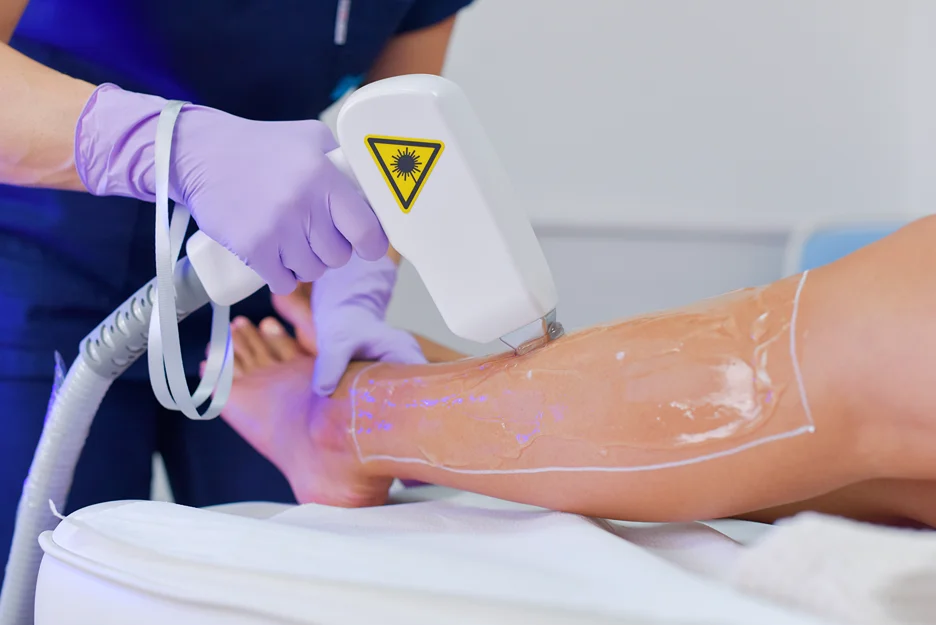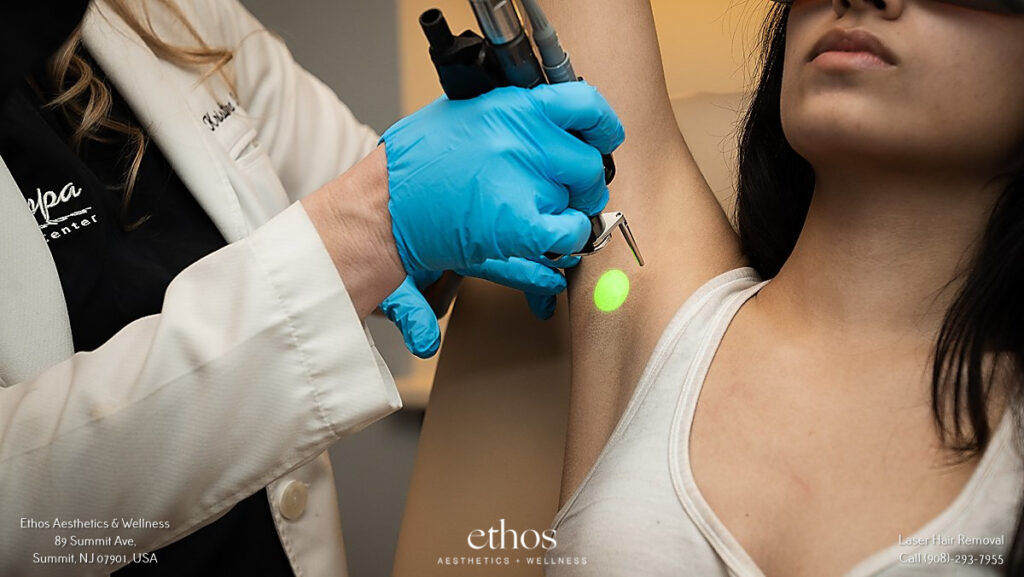Have you been dreaming of permanently banishing unwanted body hair, but worried about painful laser hair removal burns?
As expected, this is a fear not at all that rare.
While laser hair removal can safely and effectively remove hair for good, minor burns are a common side effect. For some, the horror stories of severe blistering or scarring are enough to make them think twice about this popular cosmetic treatment.
But you can minimize your risks and get the smooth, stubble-free skin you want by going in with eyes wide open. Here’s what you need to know about laser hair removal burns before taking the plunge.
The Interesting Truth About Laser Hair Removal Burns
These are some of the things you need to know about laser hair removal burns:
- It’s true that there are people who undergo laser hair removal and experience some type of side effect. But the vast majority are minor like redness or swelling that goes away quickly.
- Only a very small minority of patients report serious burns from laser hair removal. Most burns are first or second-degree and heal without scarring if treated properly.
- Newer laser technology with built-in safety features has made burns less common compared to 5-10 years ago. Most reputable providers use devices cleared by the FDA for safe use.
- Laser burns are more likely to occur on those with darker skin tones or with tanned skin. But with proper pre-treatment care, these patients can undergo successful laser hair removal safely.
The bottom line: With an experienced technician using a modern device, your chance of getting a noticeable burn is very low. Minor side effects are common, but serious burns requiring medical treatment are rare. Still, it’s vital to understand the causes and how to minimize risks.
What Causes Laser Hair Removal Burns?

So what exactly leads to a burn when removing hair by laser? Here are the main causes:
- Incorrect laser settings – If the energy level is too high for the skin type, it can overheat and cause burns. This is the most common cause, pointing to technician error.
- Damaged or defective equipment – Poorly maintained lasers with issues in the device itself can misdirect heat and cause burns.
- Hormonal changes – Hormonal fluctuations leading to increased hair growth can also increase burn risk. The treatment may seem more painful when hair density increases.
- Certain medications – Medications that make skin more sensitive like Accutane can make it more susceptible to burning.
- Unrealistic expectations – Trying to remove all hair in one session on a high setting instead of gradual treatments provokes burns.
Most burns result from inaccurate laser application rather than the treatment itself. With proper protocols and an experienced technician, the risks are greatly reduced. But it’s still vital to take precautions.
Skin Factors Leading to Laser Hair Removal Burns
Even when performed properly, laser hair removal can burn patients with certain skin characteristics or conditions including:
- Darker skin tones – The melanin that gives darker skin more pigment also absorbs more laser energy, increasing risk of burns compared to paler skin.
- Sun tanned skin – A summer tan indicates higher melanin levels in the epidermis, again making burns more likely.
- Certain skin conditions – Active acne, psoriasis and other conditions that impact the skin can increase vulnerability to laser burns.
- Photosensitive medications – Some medications like tetracyclines and NSAIDs make skin more photosensitive and more likely to burn.
- Previous treatment – Skin that has been recently waxed or sunburned is more sensitive to laser energy.
Essentially anything that impacts the outer layer of skin makes it more likely to absorb laser light and heat up excessively, increasing the chances of burns, blistering or scarring.
How to Prevent and Minimize Risk of Burns from Laser Hair Removal
While risks can never be fully eliminated, the following precautions and advice can help minimize the chances of burns from laser hair removal:
Choose an Experienced, Reputable Provider
Do your homework to find a technician thoroughly trained in using lasers for hair removal. They should be able to advise on the best laser settings and protocol based on your skin/hair type. Ask about their specific experience, training credentials and how long they’ve performed treatments without incident.
Avoid Unrealistic Low Prices
Bargain procedures often come with bigger risks. Paying rock-bottom prices likely means they cut corners on safety measures, training and using appropriate laser types for your skin tone. Higher pricing with an experienced technician is worth avoiding complications.
Follow Pre-Treatment Guidelines
Avoid sun exposure, tanning, and skin irritation from waxing/tweezing for 4-6 weeks pre-treatment. Stop photosensitizing medications with doctor clearance. Follow any other directions for pre-treatment skin preparation.
Communicate About Any Changes
Inform staff of any changes since your last session – new medications, skin conditions, or irritation like sunburn. All impact your sensitivity so settings should be adjusted accordingly.
Post-Treatment Care Is Crucial
Strictly follow all aftercare instructions provided, including avoiding sun, heat, skin products and activities that cause friction. Keep the area clean and moisturized as directed to prevent infection as burns and blisters heal.
Watch for Early Signs Of Burns
Redness right after treatment is normal, but contact the clinic if the redness spreads or doesn’t fade within 12 hours. Increased pain, blistering, swelling or peeling skin may signal a burn requiring medical treatment.
Prevention is always better than dealing with burns after the fact! Being proactive reduces the risks significantly.
What to Do for Laser Hair Removal Burns and Blisters
If burns, blisters or excessive pain occurs after a laser session, take these steps:
First Aid Measures
- Apply aloe vera gel and cool compresses to ease pain and prevent infection. Take over-the-counter medicines like Tylenol for discomfort.
- Avoid picking or scrubbing blisters to prevent infection and scarring. Gently cleanse with mild soap and water only.
- Cover with clean gauze only. Avoid using creams/ointments which can trap heat and make burns worse.
- Cool the skin immediately. Apply an ice pack wrapped in cloth or cool running water over the burn for 10-15 minutes to stop heat damage. Avoid direct ice contact.
- Use OTC pain relievers. For discomfort, over-the-counter drugs like Tylenol or ibuprofen help reduce inflammation. Avoid aspirin which may exacerbate burns.
- Keep it clean. Gently cleanse burned skin once daily using mild, fragrance-free soap and lukewarm water. Avoid harsh scrubbing.
- Drink lots of water. Staying hydrated supports wound healing. Drink 8-10 glasses of water daily, avoiding alcohol which dehydrates skin.
- Protect from sun. Keep burned areas completely covered with clothing or bandages. UV exposure slows healing.
With diligent at-home care, most mild laser hair removal burns heal within a week. But doctor’s supervision ensures proper, scar-free healing for deeper burns.
See a Doctor Promptly
Schedule an urgent consult with your dermatologist or primary care doctor, especially if burns cover a large area or seem severe. They can assess the level of burns, provide appropriate medical treatment and monitor healing. Prescription antibiotic ointments or other interventions may be prescribed for deeper burns or signs of infection.
Be Realistic About Recovery Time
Superficial redness and irritation often resolves within a few weeks with proper aftercare. But severe burns which penetrate deep skin layers can take months to fully heal, with high risk of scarring or permanent pigment changes. Have your doctor set clear expectations about the recovery trajectory.
Discuss Impact on Future Treatments
Burns you experience may influence the safety of undergoing future laser hair removal on the affected area. Talk to your provider about whether treatment can resume once healing is complete or if the risks are now too high for your individual situation. Don’t attempt to treat an area that had burns until getting medical clearance.
Explore Other Options If Needed
While most burns heal well, a severe burn may mean laser is no longer a viable hair removal option for you going forward. In these rare cases, discuss alternative permanent or semi-permanent methods like electrolysis with your doctor.
The Takeaway: Laser Hair Removal Can Be Safe When Done Correctly

While laser hair removal does carry risks of burns and other side effects, it can be an extremely effective and safe method for permanently reducing hair when performed by a qualified professional. The key is choosing an experienced technician using gold-standard devices appropriate for your skin type.
Do your due diligence in screening providers thoroughly and following all pre and post-treatment protocols.
At Ethos Spa, your happiness and satisfaction are our top priorities.
We know that considering any cosmetic procedure is a big decision, and you want to feel confident you’ve chosen the right place. That’s why we’ve worked hard to earn a reputation as the premier spa for customized, non-invasive treatments in New Jersey.
With proper care, most people achieve smooth, stubble-free skin free of burns or scarring. But weigh the benefits against any personal factors that may indicate laser hair removal isn’t for you.







